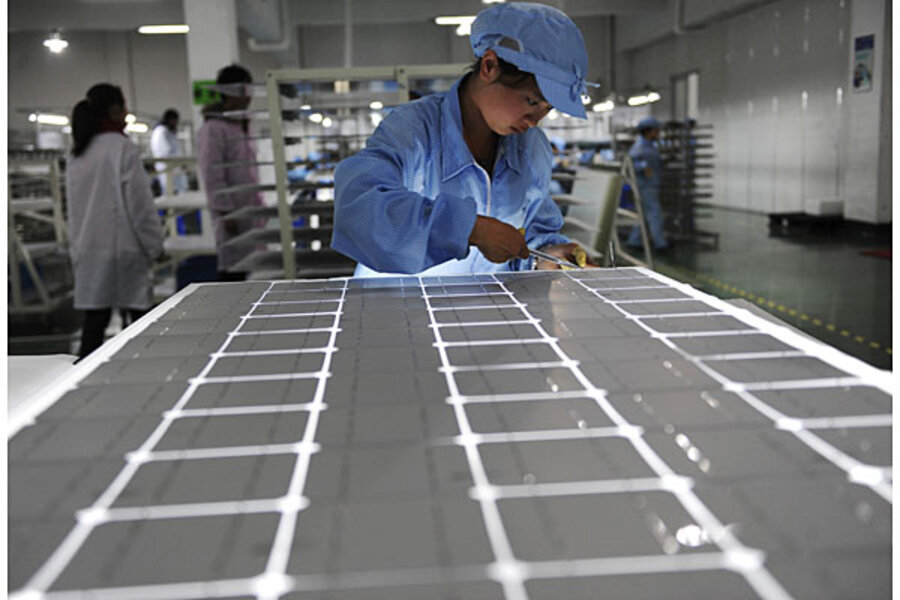Walmart, Costco among top solar-using companies
Loading...
A number of major US companies are taking energy into their own hands, harnessing solar power to cut costs and improve the bottom line. Iconic brands are now being equated with the power of the sun, and retail giants are leading the trend.
A recent report published by the Solar Energy Industries Association (SEIA) shows that 42 companies have installed upwards of 320 megawatts of photovoltaic (PV) capacity at more than 750 locations across the US. The top 20 companies account for almost 280,000 kilowatts of solar-electricity generating capacity, which is about the capacity of a mid-sized natural gas power plant. This also translates into the generation of over $47 million in electricity every year and hundreds of millions in utility bill reductions for those businesses. Their capacity can power almost 50,000 average homes. The top 20 have installed more than 1.2 million solar panels.
To put things into perspective, Walmart and Costco are said to have installed more solar capacity on their store rooftops than the entire state of Florida. Interestingly, retail giants have also installed more solar capacity that public utility companies. (RELATED: Iraq to Invest $500 Billion in Energy Sector)
It’s not just a fashionable trend. For these retail giants, it is cost-effective and sort of an electricity insurance policy against increasingly frequent blackouts. The size of these retail facilities mean that they already have to pay out enormous sums on roof repair, so solar panels makes sense. Retails roofs are now assets rather than liabilities.
Here are the top 10 retail giants in terms of capacity:
Walmart
Costco
Kohl’s
IKEA
Macy’s
McGraw Hill
Johnson & Johnson
Staples, Inc
Campbell’s Soup
Walgreens
Walmart leads the pack by a wide margin, but it is after all, the largest company in the world. Walmart’s 144 solar systems boast a combined solar capacity of approximately 65,000kW. In mid-September, Wal-Mart completed its largest system, a 3.3-megawatt project at a distribution center in Buckeye, Arizona. The company has installed 144 systems among its more than 4,500 U.S. stores. (RELATED: All You Need to Know About LNG)
Costco, which also is pushing the sale of PV panels for residences, currently has 62 solar systems with a combined capacity of 38,900kW. Costco has solar systems in five US states, but the company is rather quieter than its fellow solar competitors in terms of future plans and end objectives.
Kohl’s 124 solar systems have a combined capacity of 36,474kW. For three years running, Kohl’s has used 100% renewable energy to meet its electricity needs (of course, much of this is done through the purchase of renewable energy certificates). The company plans to have 200 solar systems on its rooftops by 2015. Since 2011, Kohl’s has seen a 17% increase in its solar systems locations. Kohl’s is boosting its existing solar capacity in the states of California, Connecticut and Maryland and setting its sights on new solar capacity in Massachusetts, New York and Ohio. .
IKEA now boast solar power in almost 80% of its US stores, with a total capacity of 21,495. IKEA has taken the solar generation scene by storm, with its most recent projects unveiled in Florida, Virginia, Texas, Michigan, Pennsylvania and Georgia. Unlike Kohl’s, for instance, IKEA isn’t buying renewable energy credits to show the world that it’s 100% green. Currently, the company is finishing up 16 solar projects across America—which will give it more capacity that the largest solar farm in the US.
Walgreens is 10th on this list, but it deserves more attention. Walgreens currently has 8,163kW of capacity, and on average, rooftop solar systems provide up to 20% of power at certain Walgreens stores. The company has installed solar systems at its stores in California, Oregon, Ohio, New Jersey and Connecticut. Ohio is the latest endeavor, with Walgreens launching installation of 90 solar systems throughout the state, with the first half scheduled for completion mid next month. We expect Walgreen’s to find its way further up the rankings the next time around.
Source: http://oilprice.com/Alternative-Energy/Solar-Energy/Panel-Up-The-Top-6-Commercial-Solar-Users.html







